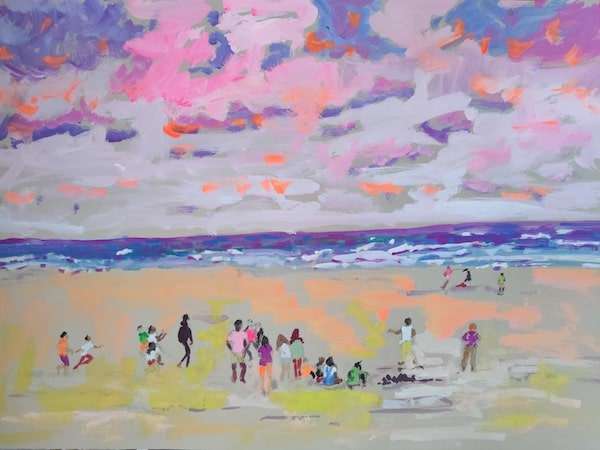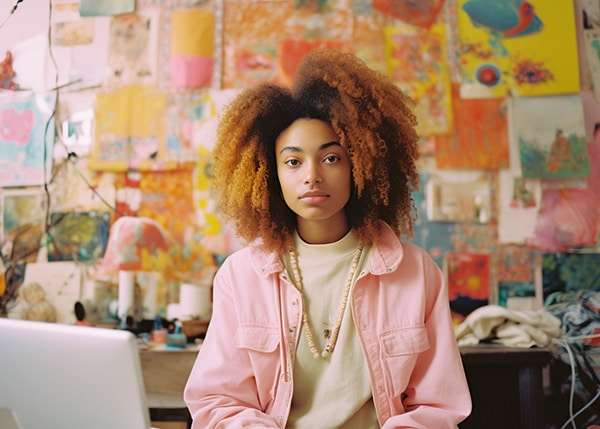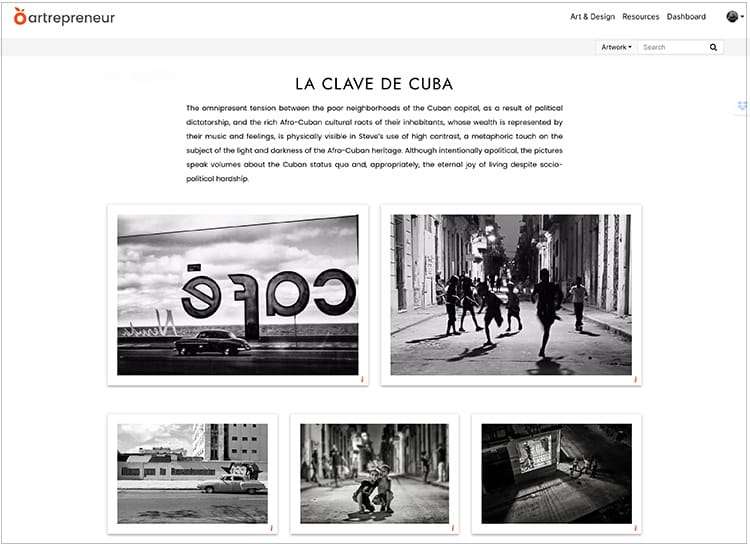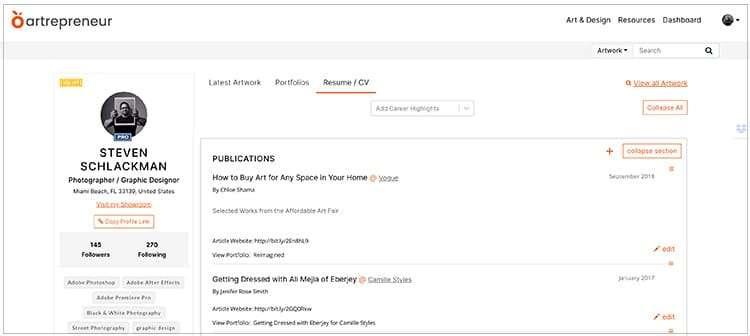Delve into the first chapter of our Building a Better Online Profile Series, with our initial focus on Artist Branding.
In this digitally-infused era where traditional art galleries are no longer the only platform for artists, constructing a compelling online presence is vital to being a successful artist. Your profile on platforms, such as Artrepreneur or Saatchi Art, aren’t just digital exhibitions of your art but act as a virtual salesperson, connecting you with potential buyers, fellow artists, and art lovers while revealing boundless opportunities.
For an online profile to be compelling and resonate with an audience, it should be infused with the person’s brand, reflecting what they stand for, what they offer to the world, their values, beliefs, and goals.
Artist branding goes a step further by including your artistic voice, vision, and style. It’s the essence of who you are as an artist, including the themes you explore, your preferred mediums, and the aesthetic that characterizes your work. A well-defined artist brand can help you attract the right audience, gain recognition, and build a successful career in the art world.
This installment will explore how to infuse your brand into your online profile so it can be more engaging and effective as your virtual salesperson.
Artist Branding Starts with Crafting an Engaging Artist Statement
Your artist statement is at the heart of your online profile. It gives viewers insight into your creative process, the inspiration behind your work, and what you hope to communicate through your art. It’s your story distilled into a few potent paragraphs. Your statement is more than a description of your work; it’s an opportunity to connect with your audience emotionally.
Consider this line from the artist statement of renowned painter Frida Kahlo. In these few words, she captured her artistic journey and the profoundly personal nature of her art.
“I paint self-portraits because I am the person I know best. I paint my own reality. The only thing I know is that I paint because I need to and I paint whatever passes through my head without any consideration.”
Conveying your artistic vision with clarity and passion can ignite curiosity and resonate with your audience, making your work more memorable. While your talent is paramount, your artist statement can play a crucial role in how others perceive and value your work. It’s a tool that can open doors and create opportunities. You may only have one chance to get that vision across to your audience, so take your time crafting it. Don’t rush it.
When drafting your artist statement, consider the themes that dominate your work. Are there specific subjects you explore or messages you wish to convey? Are your artworks influenced by your personal experiences or shaped by broader societal issues? You anchor your statement in your unique creative perspective by addressing these questions. Also, your statement doesn’t need to be exhaustive. Keep it concise but meaningful. The length may vary depending on how you are using it. For social media, it may be only 100 words. For a website profile, we suggest around 300 words. It can be more extensive at 500 words or more for grants or other applications.
Don’t think of your artist statement as a static document but as a reflection of your ongoing artistic journey. It should evolve as you grow as an artist. (For more, see, Crafting the Perfect Artist Statement.)
Highlight Your Education, Workshops, and Achievements
Showing potential customers and buyers your qualifications and achievements is vital in building credibility. They act as endorsements of your skill and creativity, signaling to potential buyers, gallery owners, or critics that your work has been acknowledged by the art community.
For instance, studying fine arts at a prestigious institution shows dedication to your craft and may also help validate your work’s purchase price. For a graphic designer, winning that prestigious design award could provide enough credibility to stop clients from second-guessing your creative decision on a project.
Take Linda Clerget, a French contemporary landscape painter. Her extensive list of awards and exhibitions is a testament to her innovative approach to art and positions her as an important artist in the contemporary art scene.

Linda Clerget highlights her achievements on her resumé/CV to build an excellent online profile. Click to view.
It may also help to make your accomplishments more interesting by weaving them into a narrative rather than just making a list. If you attended a prestigious workshop, don’t just list it – discuss how it has shaped your approach to art. If you received an award for a specific work, share its story.
Your Artistic Voice Should be Authentic and Personal
Your “voice” refers to your distinct personality or style when expressing yourself in writing and through your artistic works. It’s a combination of your tone, rhythm, and the language you use to communicate your vision, emotions, thoughts about your work, and how you describe it to others.
Your voice is the underlying thread that ties together all of your creative endeavors into a cohesive whole, making them distinctly recognizable as your own. It cannot be forced or hurried but evolves through constant creation, exploration, introspection, and experimentation. The unique thing about your voice as an artist is that it can’t be replicated because it comes from your life experiences, inspirations, techniques, and passions. This is the ‘X-factor’ that will make your audience feel connected with you and your work.
So don’t say what you think people may want to hear. That just won’t be you and will inevitably sound generic or uninspired. Your authenticity will be more exciting and memorable. Instead, when crafting written content on your profile, ask yourself: Does this sound like me? Is this an honest reflection of my perspective as an artist?

Your profile should be created in your own “voice,” reflecting your personality and style.
Sharing Personal Stories Creates Emotional Connections
Authenticity doesn’t just come from how you say things but also what you say. Sharing your personal stories about yourself and your works can foster a deep emotional connection with your audience, which is invaluable in art.
After all, art is an emotional business. People don’t just buy art or hire a designer; they often buy into the person and the story that comes with each piece. The idea that “The work speaks for itself” is no longer viable. So many excellent artists produce fantastic work that you often need something extra to stand out, especially if those potential customers don’t really understand art and design.
Whether you’re a self-taught artist who began sketching at the age of five or someone who found their passion for art after a life-changing event, every artist has a story. Sharing this journey humanizes you as an artist and helps your audience understand what drives your creative process.

Use portfolios to share the stories behind your work so your audience can understand what drives your creative process.
Don’t be afraid to share your struggles as well. Art is not always about perfection; sometimes, it’s about how you navigated the turbulence to get where you are. Sharing these experiences makes your journey relatable and authentic, creating an emotional bond between you and your audience.
Harnessing the Power of Social Proof in Your Artist Branding
Social proof plays a crucial role in amplifying artist branding strategies. It is an influential and highly persuasive form of validation that artists can leverage to enhance their reputation and build trust among potential art buyers.
What exactly is social proof? This psychological phenomenon, rooted in our inherent desire to conform to societal norms, refers to people’s tendency to perceive actions as more correct or desirable when they observe others doing them. In the context of artist branding, social proof can translate into various forms, each contributing to a more powerful brand image.
- Firstly, endorsements or testimonials from satisfied art buyers or collectors can significantly strengthen your brand. These positive affirmations provide tangible proof of the value of your work, enhancing your credibility in the eyes of prospective buyers. Moreover, testimonials have the power to build emotional connections by narrating personal experiences and impacts, which can be incredibly compelling.
- Secondly, art reviews or critical appraisals, especially from respected figures or platforms in the art world, that objectively assess your work’s merit can help establish your art’s value and enhance your professional standing.
- Thirdly, collaborations with well-known artists or influencers in the art community can elevate your brand. These partnerships symbolize recognition from your peers and signify your acceptance into exclusive art circles. Moreover, such collaborations can expose you to new audiences, thus extending your reach.
- Lastly, showcasing your work in renowned galleries or notable exhibitions serves as an implicit stamp of approval. It suggests that your art has met high curatorial standards and is worth the attention of art lovers and collectors.
Remember, while the internet has democratized art, it’s also made the field more competitive. In such a crowded space, leveraging social proof can help your artist brand stand out, making it easier for potential buyers to notice and appreciate your work.
Many art sites provide sections in the profile for social proof. For example, Artrepreneur has an extensive resume/CV area with sections for exhibitions, press, partnerships, and more. Other sites may only have a text area for filling out these profile details. In that case, we suggest creating a PDF resume/CV online linking to it.

Social proof, such as publications and testimonials, is a high form of validation for an artist brand.
Concluding Thoughts
Building a strong artist brand isn’t an overnight process, but with authenticity, consistency, and strategic branding, you can create a robust artist profile that resonates with your audience and sets you apart in the thriving art market.
Remember, your profile isn’t merely a platform to showcase your art – It’s about turning viewers into followers, followers into fans, and fans into buyers. It’s about transforming your art into your brand.
Remember the wise words of artist Paul Gauguin, “Art is either revolution or plagiarism.” Ensure your artist profile reflects your revolution, unique vision, and passion.
If you have other branding suggestion you want to share, please leave them in the comments below